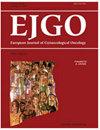妇科肿瘤术后静脉血栓栓塞的发生率及预测因素
IF 0.5
4区 医学
Q4 OBSTETRICS & GYNECOLOGY
引用次数: 1
摘要
目的:描述妇科癌症术后静脉血栓栓塞(VTE)的发生率、发生时间和危险因素,并评价其对生存的影响。方法:这是2008年1月至2016年12月在一个中心进行的回顾性分析。记录手术过程、患者人口统计学特征、恶性肿瘤和VTE类型以及手术后30天内的死亡率结果。使用双变量分析评估与VTE相关的显著变量,并使用Logistic回归模型评估VTE的风险因素。结果:术后30天内VTE总发生率为0.899%(36/4005)。在这些比率中,腹部手术的比率为1.56%(19/1220),微创手术(MIS)的比率为0.6%(17/2785)。从手术到确诊的中位时间为8.5天。在单变量分析中,VTE与卵巢和输卵管癌症(P<0.05)、年龄较大(P=0.001)和输血(P<0.001)具有统计学显著相关性。使用多变量逻辑回归模型调整单变量分析的P<0.2的变量,发现除年龄外,其他变量与VTE仍有显著相关性。结论:术后第2周可能是VTE发生的高危期,卵巢和输卵管癌症、腹部手术和输血可能是发生VTE的重要危险因素。本文章由计算机程序翻译,如有差异,请以英文原文为准。
Incidence and predictors of venous thromboembolism after surgery for gynecologic cancer
Objective: To describe the incidence, timing, and risk factors of venous thromboembolism (VTE) after surgery for gynecological cancer and to evaluate its effects of these events on survival. Methods: This was a retrospective analysis from January 2008 through December 2016 at a single center. Data were recorded on surgical procedures, patient demographic characteristics, type of malignancy and VTE, and mortality outcomes within 30 days after surgery. Significant variables related to VTE were evaluated using bivariate analysis, and Logistic regression models were used to assess risk factors for VTE. Results: The overall rate of postoperative VTE was 0.899% (36/4005) within 30 days after surgery. Of these rates, the rate in abdominal surgery was 1.56% (19/1220), and the rate in minimally invasive surgery (MIS) was 0.6% (17/2785). The median time from surgery to diagnosis was 8.5 days. In univariate analysis, VTE was statistically significantly associated with ovarian and fallopian cancer (P < 0.05), older age (P = 0.001), and blood transfusion (P < 0.001). A multivariate logistic regression model was used to adjust for variables with P < 0.2 in univariate analysis and found that except for age, the other variables continued to have a significant association with VTE. Conclusion: The second week after surgery might be high-risk period of VTE occuring, and ovarian and fallopian tube cancer, abdominal surgery, and blood transfusion might be significant risk factors for developing VTE.
求助全文
通过发布文献求助,成功后即可免费获取论文全文。
去求助
来源期刊
自引率
25.00%
发文量
58
审稿时长
1 months
期刊介绍:
EJGO is dedicated to publishing editorial articles in the Distinguished Expert Series and original research papers, case reports, letters to the Editor, book reviews, and newsletters. The Journal was founded in 1980 the second gynaecologic oncology hyperspecialization Journal in the world. Its aim is the diffusion of scientific, clinical and practical progress, and knowledge in female neoplastic diseases in an interdisciplinary approach among gynaecologists, oncologists, radiotherapists, surgeons, chemotherapists, pathologists, epidemiologists, and so on.

 求助内容:
求助内容: 应助结果提醒方式:
应助结果提醒方式:


